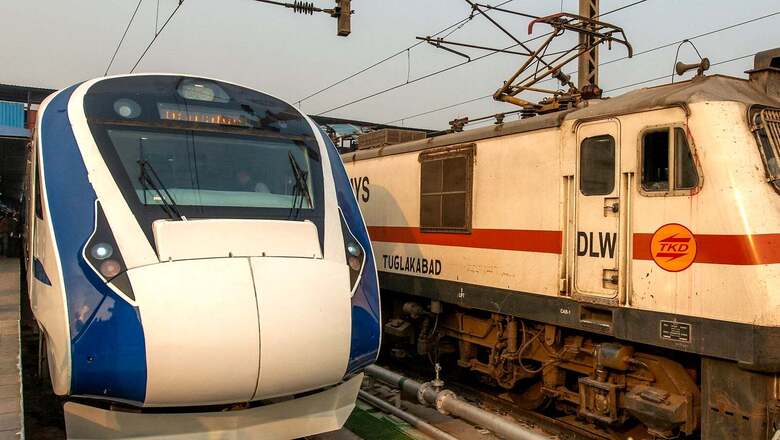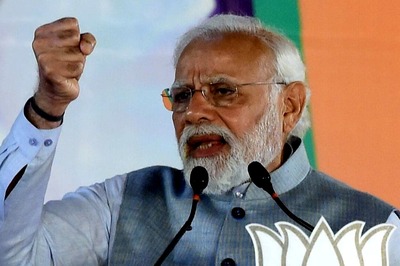
views
Indian Railways will infuse more power on its network to make it ready for the high speed and more energy consuming ‘Vande Bharat’ trains, according to an order issued by the Railway Board, which has instructed that all electrification of routes will now be sanctioned with 2×25 kV traction system only. This traction system is prevalent in countries like China, Japan, France and South Africa where high speed passenger trains operate.
According to the plans chalked out by the railways, 75 Vande Bharat trains are scheduled to hit the tracks by August 2023 and 400 are planned to be manufactured over the next three years.
“Vande Bharat trains need twice the power drawn by normal trains. Existing overhead equipment (OHE) may find it difficult to cater future demand of high speed trains running simultaneously in one section so a decision was taken to upgrade the overhead wires to 2x25kV so that the railways is ready not just to run more Vande Bharat trains, but also to make the national transporter future ready for high speed trains,” an official said.
The railways has already finalised the tender for a 1,650 track kilometer work for upgraded electrification on the high density section between Delhi and Mugalsarai for a cost of around Rs 1,140 crore.
In a significant step towards its plan to completely electrify the broad gauge network by 2023-24, the Indian Railways has achieved electrification of 52,247 route kilometers (RKM) out of 65,414 RKM as of April this year.
Sources indicated that while all new electrification work will be completed on 2×25 kV traction, conversion of all the previously electrified routes might also be undertaken in a phased manner, depending upon the need.
Unlike regular express trains which have detachable locomotive at one end, the traction for a Vande Bharat series train set is provided by electric gear (traction motor, rectifier, converters, transformer) suspended from alternate coaches and drawing energy from overhead equipment via pantographs mounted on coaches.
It is a semi-high speed train set, each comprising 16 coaches, and self-propelled, which do not require an engine. This distributed power allows the train higher acceleration and deceleration as compared to loco-hauled trains that take more time to attain top speed or gradually come to a halt.
Compared to this, a 16-coach Shatabdi type train has one source of power at one end of the train in the form of a train locomotive providing approximately 6,000 horsepower. But a Vande Bharat rake has eight motorised coaches providing approximately 12,000 horsepower to the train.
Read all the Latest Auto News here


















Comments
0 comment